The first Clydesdale I saw on Thursday was this gorgeous lump of horseflesh, an incredibly striking maximum sabino.
There was another heavily roaned sabino in the class, though not as 'patchy' as the first. It's easy to see why so many people mistake this form of sabino for classic roan though.
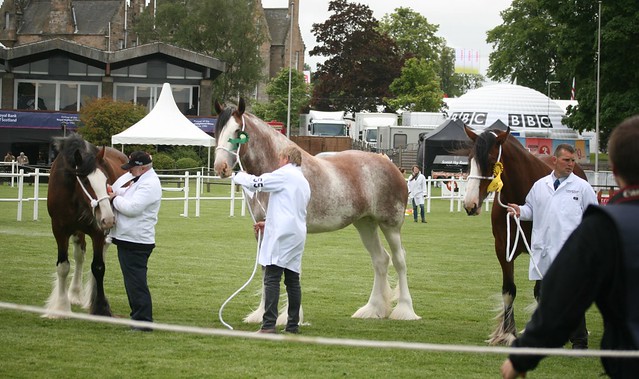
Like Highlands, Clydesdales are some of the more colourful of British breeds. Although they only really come in a limited palette of base colours (bay, black, brown and the occasional chestnut) the range of white markings is nearly limitless thanks to the myriad of different ways sabino works on them.
Some have no roaning or ticking at all and have nice clean, well defined markings...
(this one is extra unusual with that one solid leg!)
...some have the barest hint of ticking...
...and others have it almost dusted over their whole body, which, when combined with such gorgeous dappling like this one, is very appealing. I especially like the darker shading over the neck.
I'm not quite sure why it does this, but some forms of sabino also appear to cause grey manes and tails. I've seen some in the past who could pass for Silver Dapple purely because of their manes!
I loved that big chunky bay in the middle. :D
And just look at the black one's solid leg - apparently not so solid after all!
One thing I rarely see done right on model Clydesdales is the feathering. It always seems to be almost 'splayed out' for the showring, rather than puffed up. It's one of the things which instantly sets them apart from Shires, as their feathering is far more bulky.
Skipping ahead a few hours, we managed to find the massive indoor stable block that housed all the draught horses for the show. They were mostly Clydesdales but there were a couple of Canadian Belgians and possibly a couple of Shires too.
This lovely chap was called Flashman and very apt a name it was too!
There were a considerable number of horses with unusually shaped blazes and sabino markings so I took as many reference pictures as I could. As Magda said, normal people just photograph the horses faces, but we were taking shots of legs and bums and tums! XD
This one had some truly amazing markings - I just wish I could have managed to get a photo of the other side!
This one was still a youngster, hence the odd coloured mane and tail.
It's testament to the breed's docile nature and comfortable stables that we saw so many horses lying down for a sleep, even with hundreds of people loudly walking past them.
BELLY FLUFF!
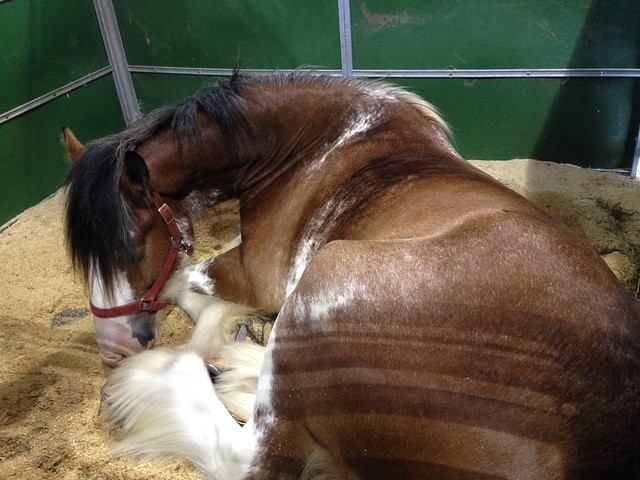
This one was still shedding its foal coat so it was stuck in a strange kind of hair related limbo.
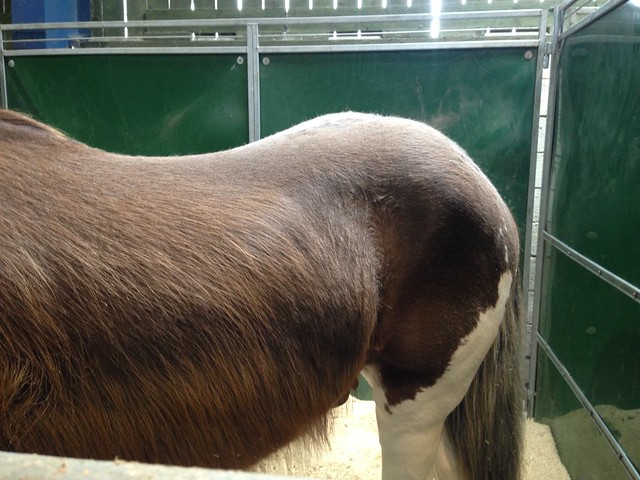
I think this one might have been a Shire rather than a Clydesdale as he had much more of a roman nose and had a really unusual elongated star. I could be wrong though.
We saw him being harnessed up later on.
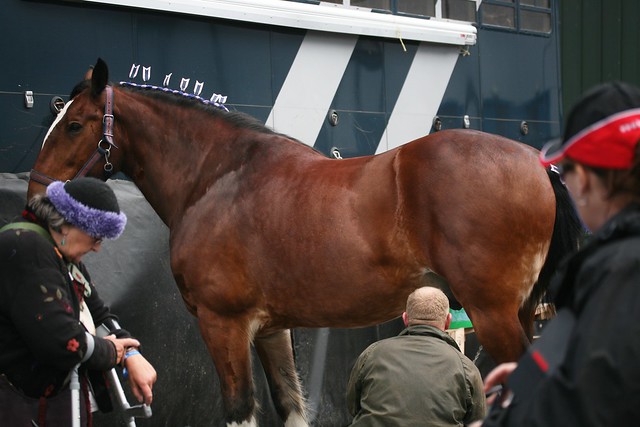
Another possible 'not-a-clydesdale' was this lovely seal bay/brown stabled near the Highlands.
There was a team of Canadian Belgians stabled there as well, who were incredibly striking - not least because of their height...19.2hh!
They had shaved forelocks too, which was a bit bizarre.
Thus concludes Part 2 - stay tuned for Part 3 - Sport Horses and Hunters!

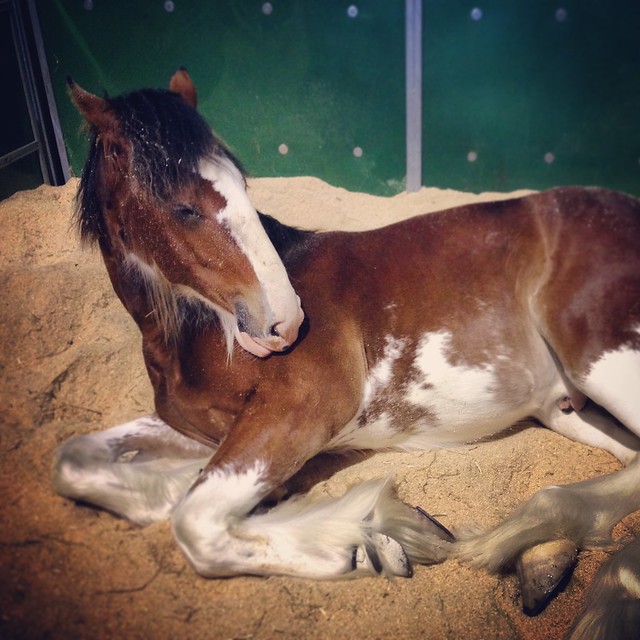
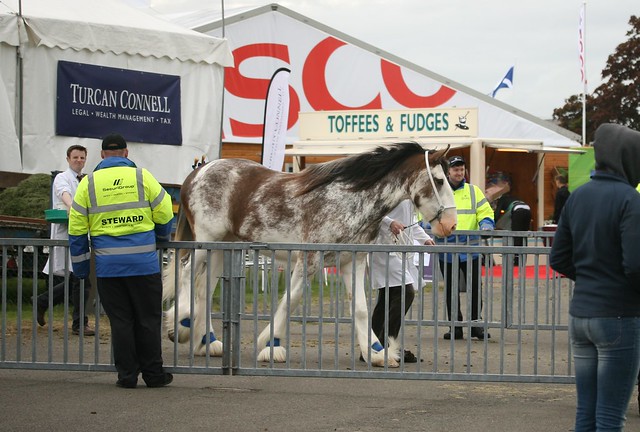
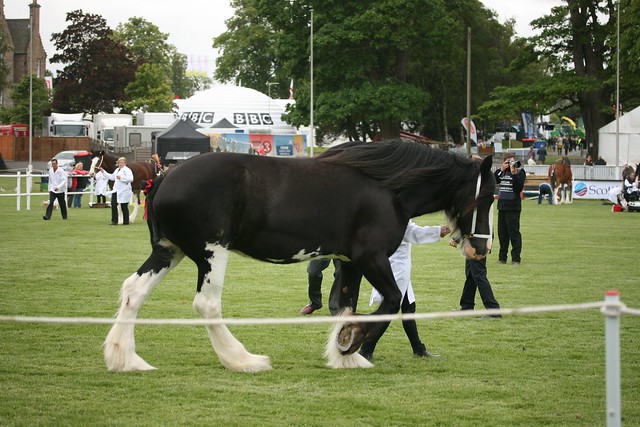
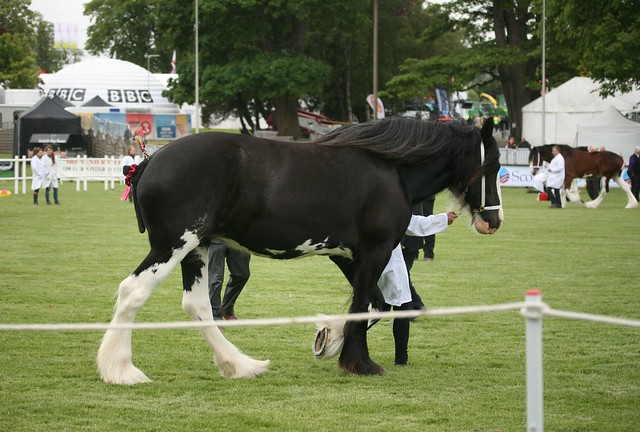
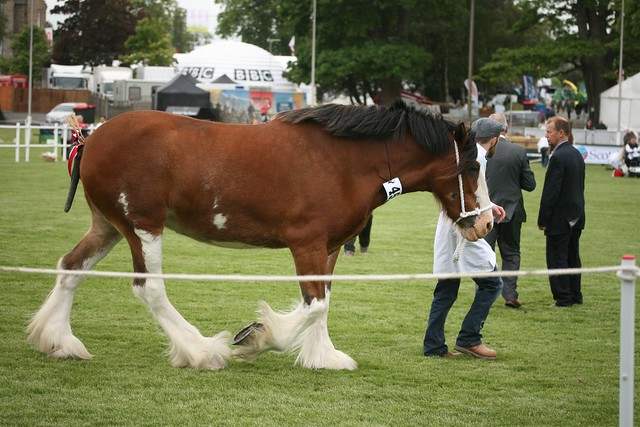
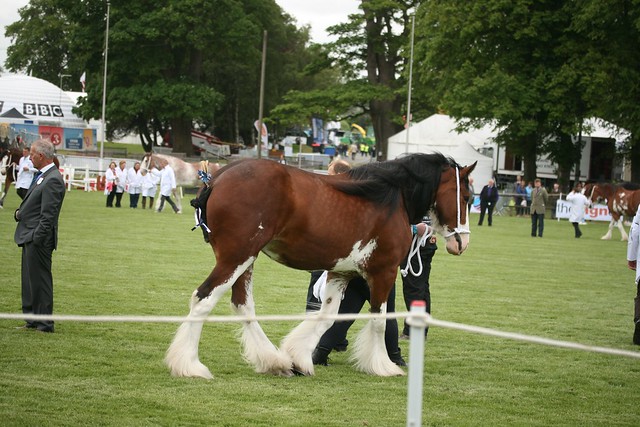
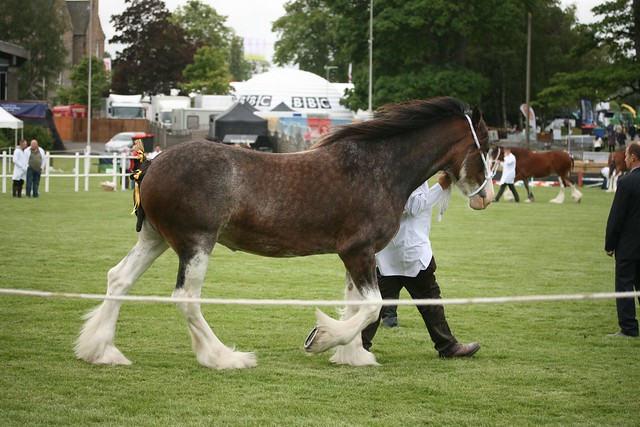
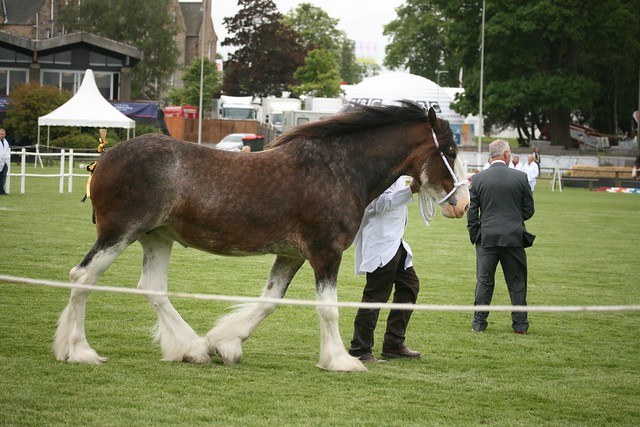
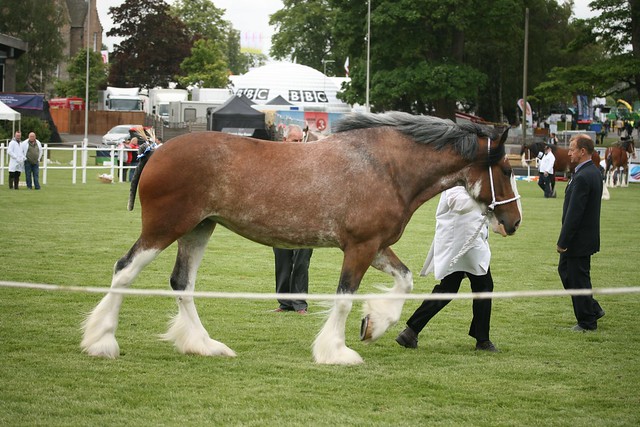
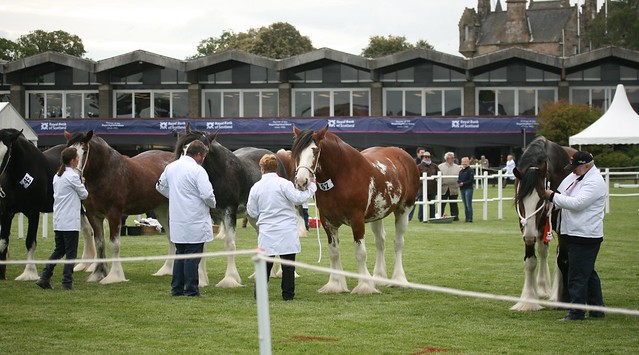
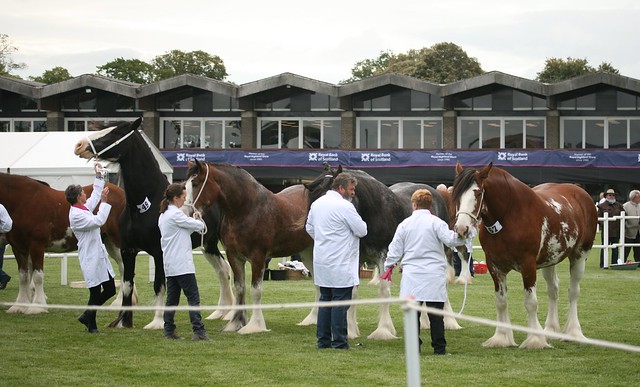
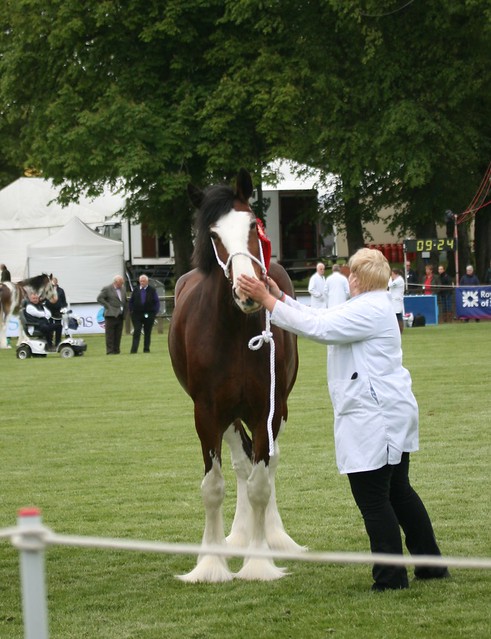
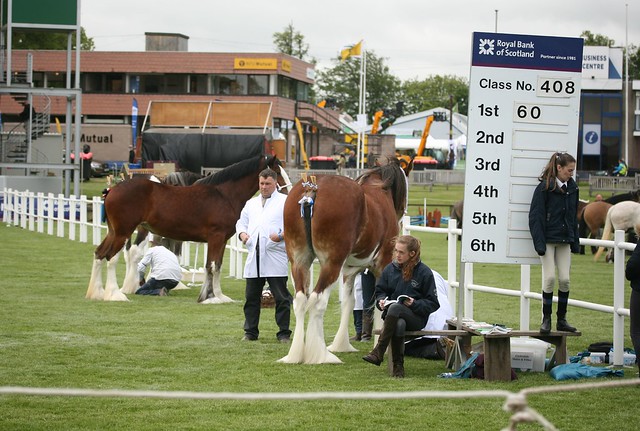
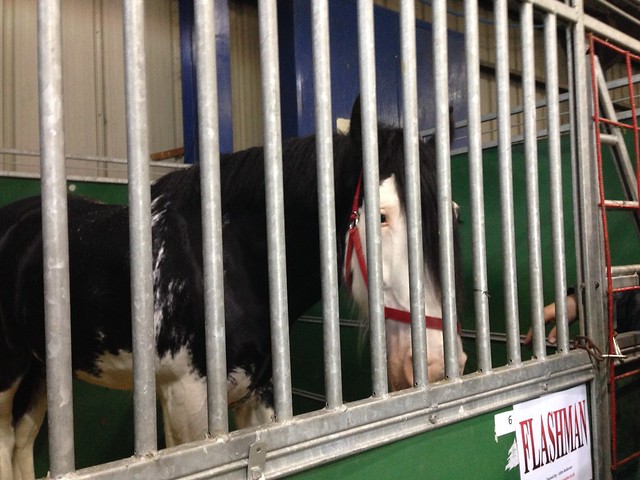
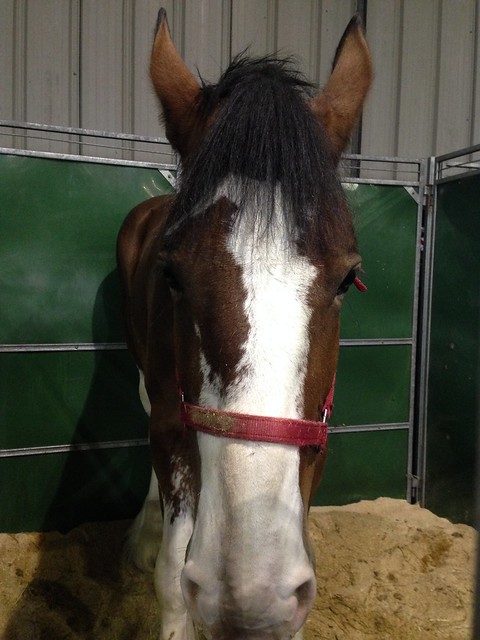
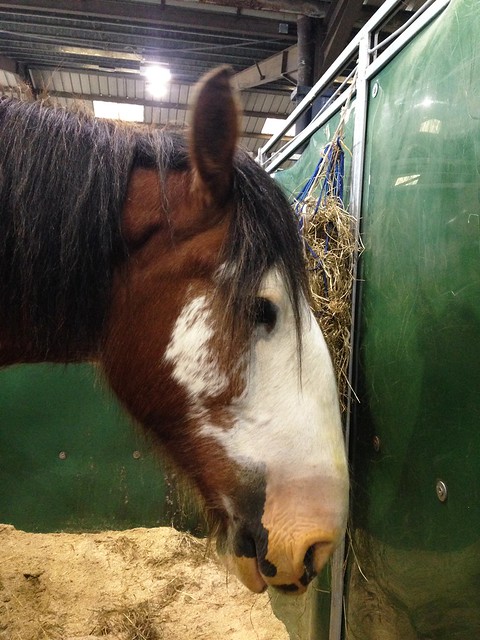
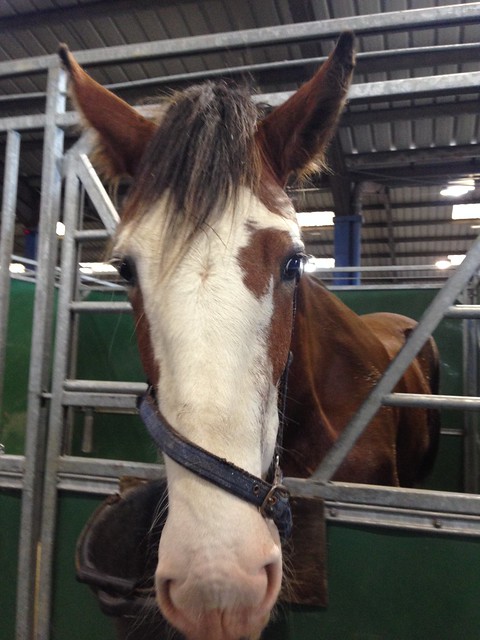
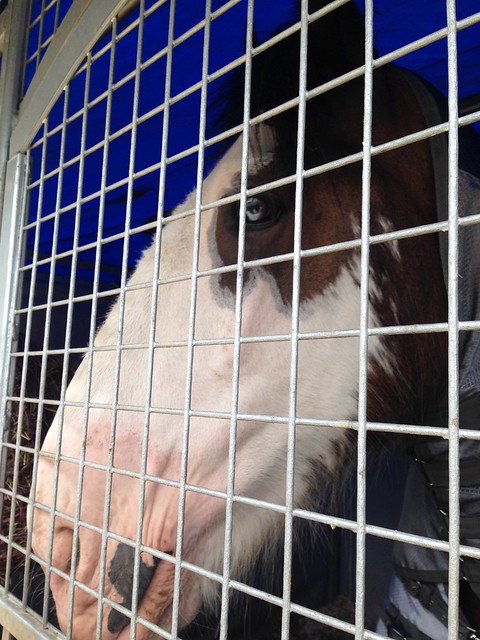
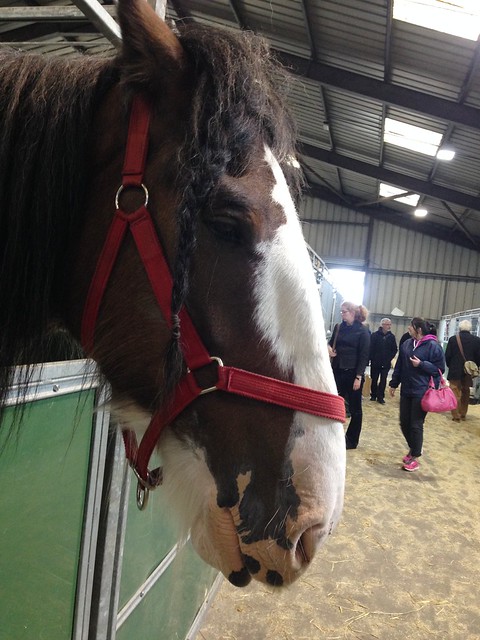
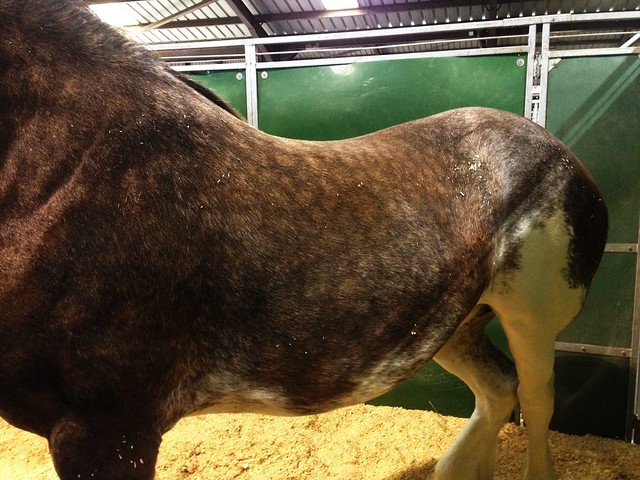
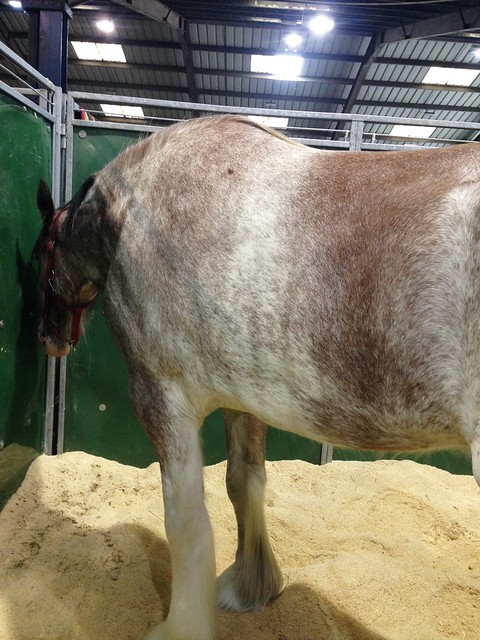
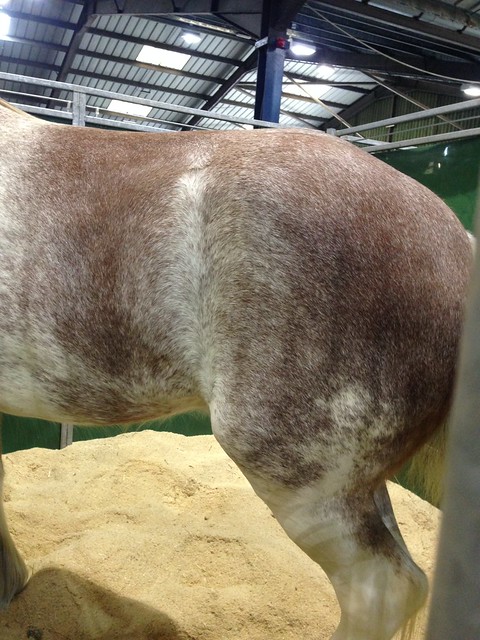
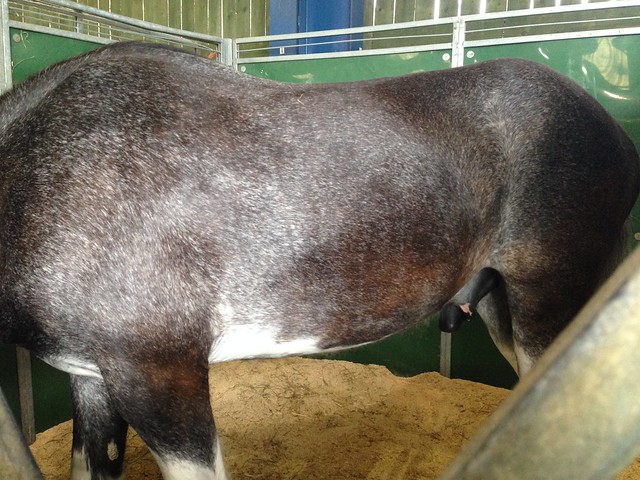
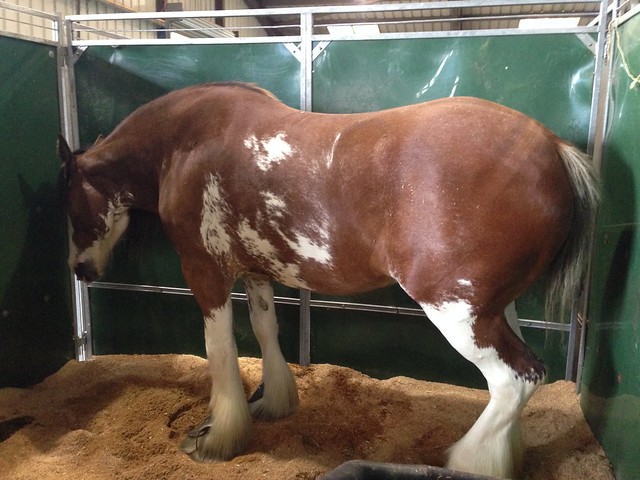
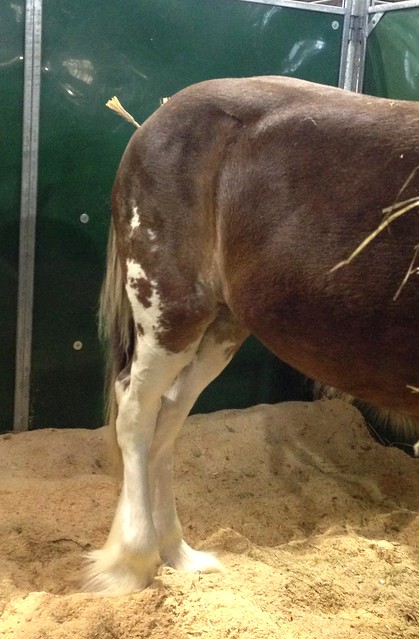
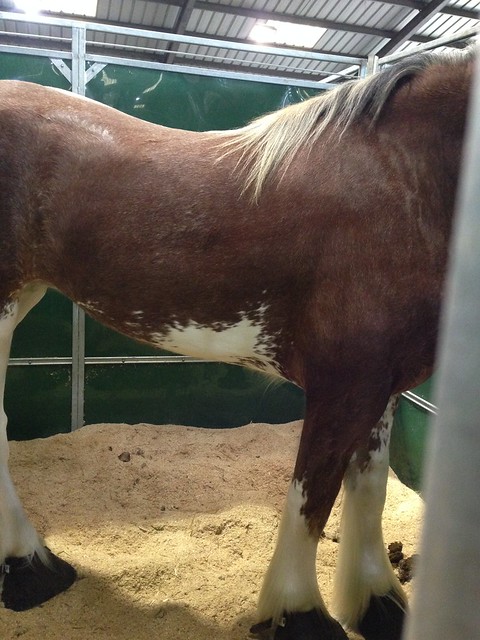
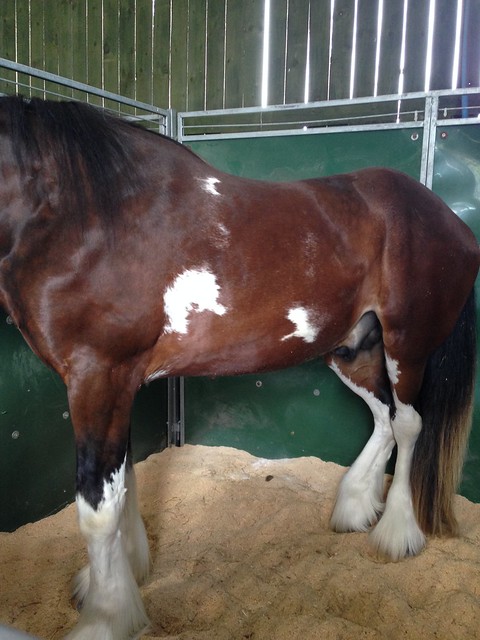
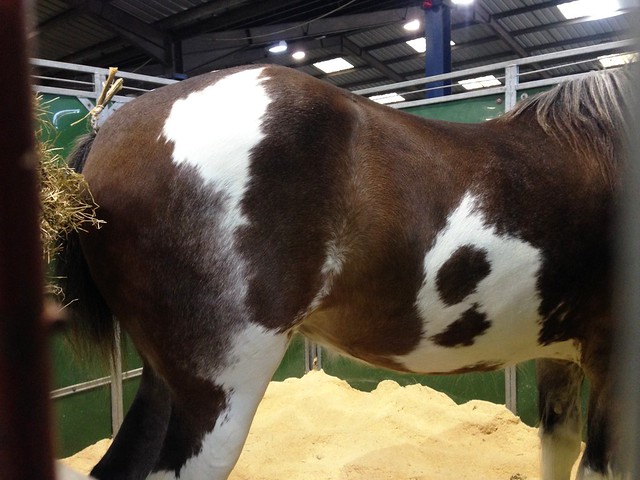
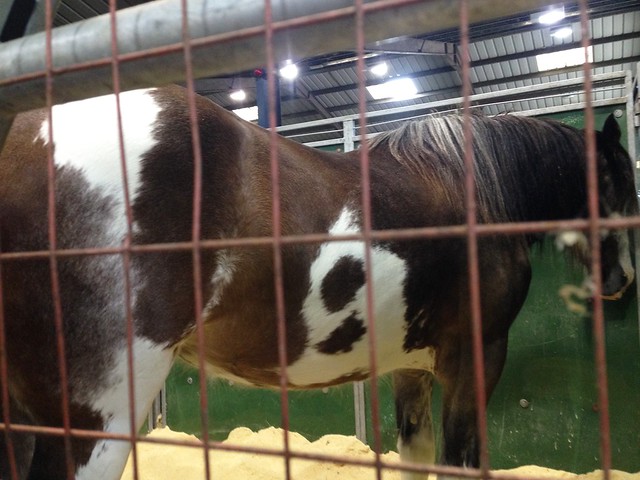
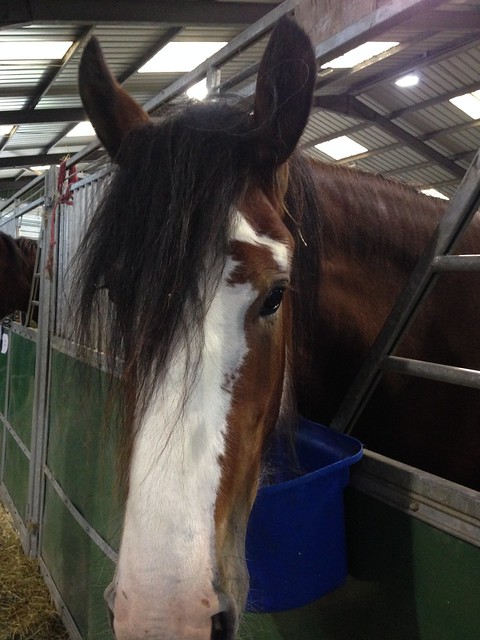
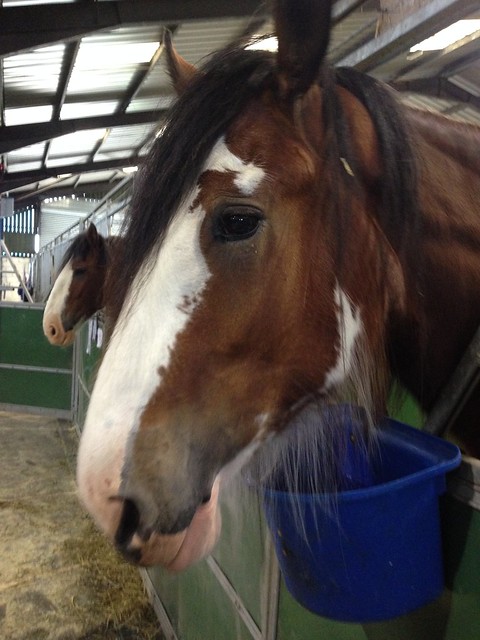
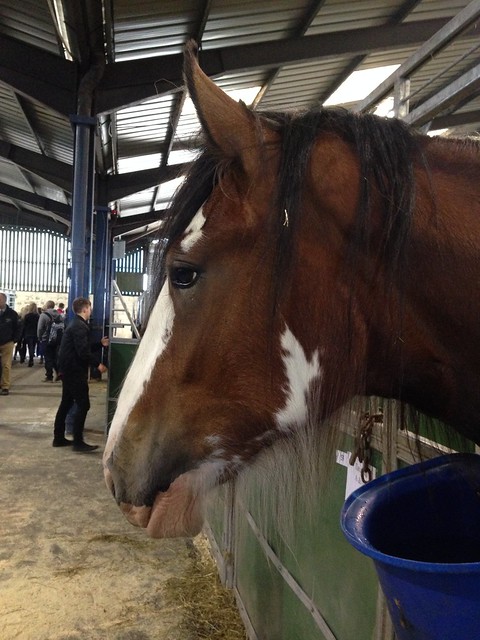
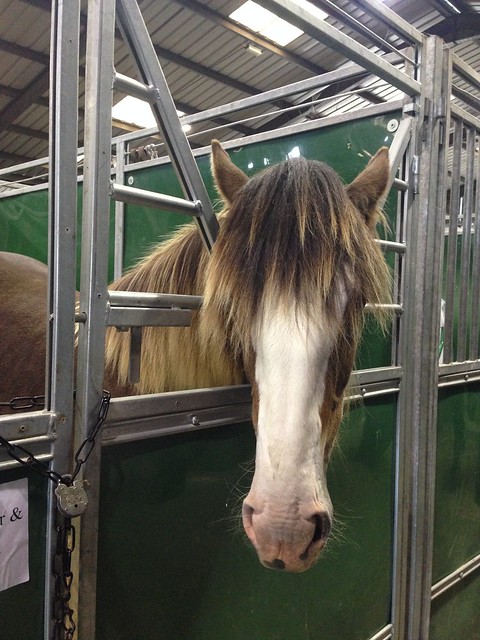
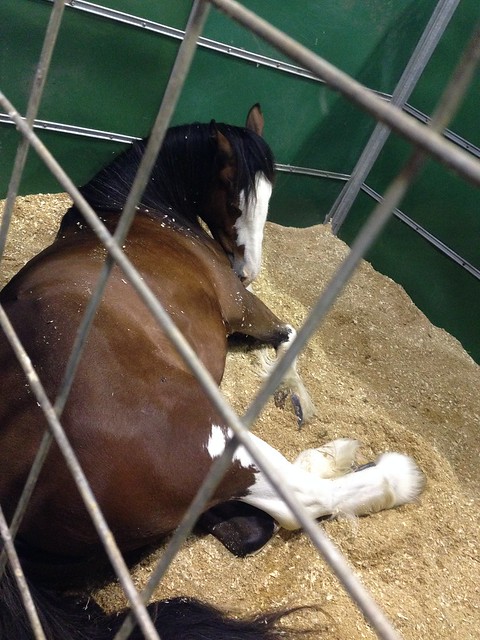
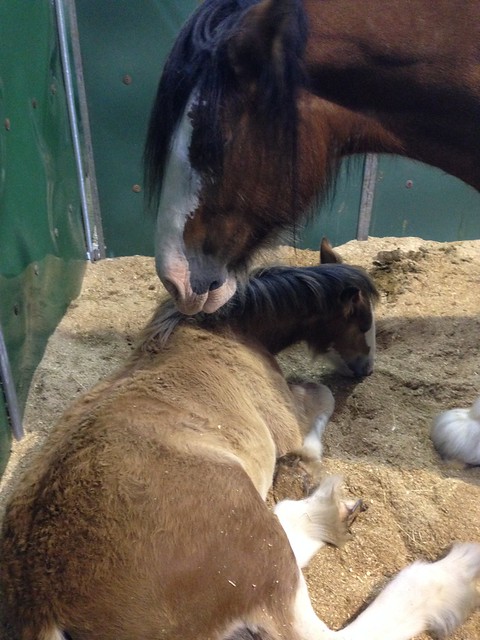
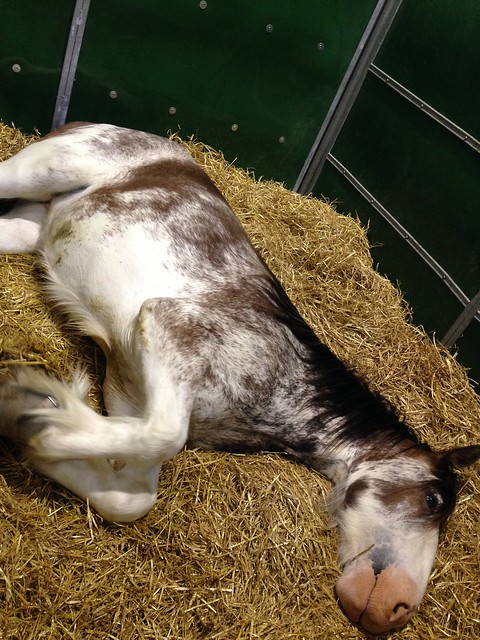
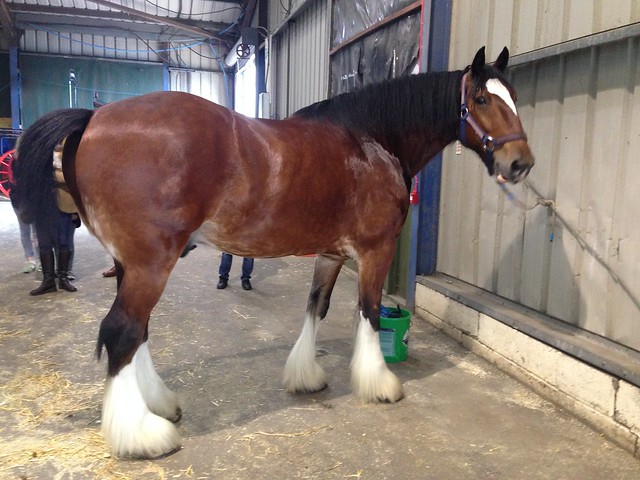
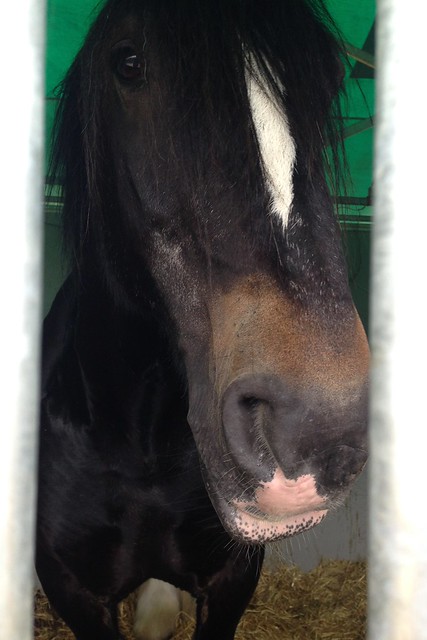
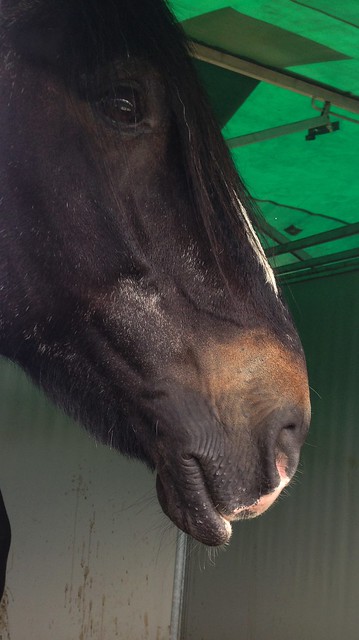
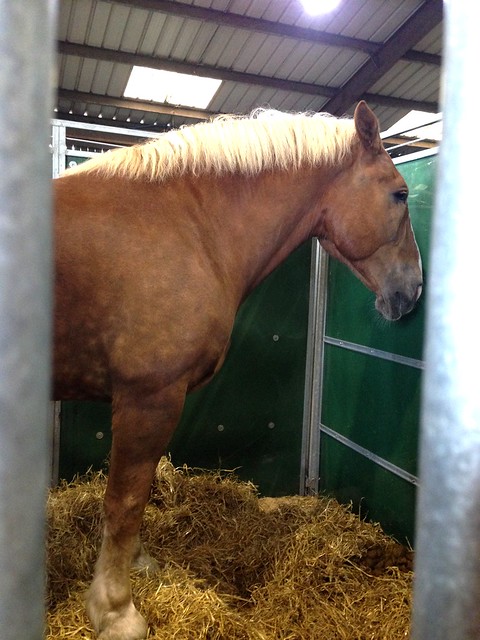
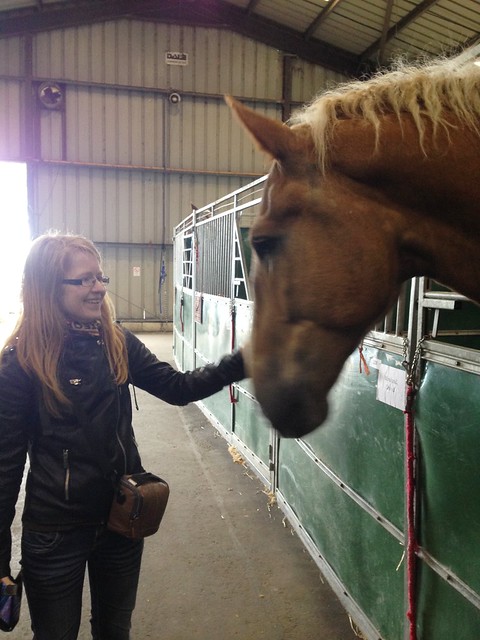
Woohoo, I'm famous! :D Do you mind if I steal the last photo for my FB?
ReplyDeleteI've found the patchy mare's other side! :D Watermarked photos, but one can get the idea:
ReplyDeletehttp://www.onlinepictureproof.com/sinclairphotography/albums/equestrian_events_2015/492397/browse/580/?w=800&h=468
http://www.onlinepictureproof.com/sinclairphotography/albums/equestrian_events_2015/492397/browse/581/?w=800&h=468